
Casco Histórico: Zaragoza's Timeless Heart
Discover Casco Histórico in Zaragoza, where history, culture, and culinary delights converge in the city's ancient heart.
Casco Histórico in Zaragoza is the city's ancient core, where the past and present blend seamlessly. This neighborhood, rich in history and culture, offers visitors a unique glimpse into Zaragoza's storied past. Wander through its narrow, cobblestone streets and discover centuries-old buildings, charming plazas, and hidden courtyards. One of the must-see landmarks is the Basilica del Pilar, an iconic symbol of Zaragoza. This magnificent basilica, with its baroque architecture and stunning frescoes by Goya, overlooks the Ebro River, offering breathtaking views. Nearby, the Seo Cathedral stands as a testament to the city's diverse architectural influences, ranging from Romanesque to Gothic and Mudéjar styles. The neighborhood is also a gastronomic paradise. Explore the vibrant tapas bars, traditional bodegas, and modern eateries that line the streets. Sample local specialties such as 'ternasco' (lamb), 'bacalao al ajoarriero' (cod), and 'churros con chocolate'. For those interested in shopping, Casco Histórico boasts a variety of boutiques, craft shops, and markets where you can find unique souvenirs. Cultural enthusiasts will appreciate the numerous museums and galleries scattered throughout the area. The Museo del Teatro de Caesaraugusta offers fascinating insights into Zaragoza's Roman past, while the Pablo Gargallo Museum showcases the works of the renowned Aragonese sculptor. As night falls, the neighborhood transforms into a lively hub of activity. Street performers, live music, and bustling terraces create a vibrant atmosphere that is perfect for an evening stroll or a leisurely meal. Whether you're a history buff, a food lover, or simply looking to soak in the local ambiance, Casco Histórico in Zaragoza is a destination that promises a memorable experience.
Local tips in Casco Histórico
- Visit the Basilica del Pilar early in the morning to avoid crowds and enjoy the tranquil atmosphere.
- Try the local tapas at El Tubo, a lively area known for its vibrant nightlife and diverse culinary offerings.
- Wear comfortable shoes as the cobblestone streets can be uneven and require a fair amount of walking.
- Take a guided tour to fully appreciate the historical significance of landmarks like the Seo Cathedral and the Roman walls.
- Don’t miss the local markets, such as Mercado Central, for fresh produce, local delicacies, and unique souvenirs.
Casco Histórico: Zaragoza's Timeless Heart
Casco Histórico in Zaragoza is the city's ancient core, where the past and present blend seamlessly. This neighborhood, rich in history and culture, offers visitors a unique glimpse into Zaragoza's storied past. Wander through its narrow, cobblestone streets and discover centuries-old buildings, charming plazas, and hidden courtyards. One of the must-see landmarks is the Basilica del Pilar, an iconic symbol of Zaragoza. This magnificent basilica, with its baroque architecture and stunning frescoes by Goya, overlooks the Ebro River, offering breathtaking views. Nearby, the Seo Cathedral stands as a testament to the city's diverse architectural influences, ranging from Romanesque to Gothic and Mudéjar styles. The neighborhood is also a gastronomic paradise. Explore the vibrant tapas bars, traditional bodegas, and modern eateries that line the streets. Sample local specialties such as 'ternasco' (lamb), 'bacalao al ajoarriero' (cod), and 'churros con chocolate'. For those interested in shopping, Casco Histórico boasts a variety of boutiques, craft shops, and markets where you can find unique souvenirs. Cultural enthusiasts will appreciate the numerous museums and galleries scattered throughout the area. The Museo del Teatro de Caesaraugusta offers fascinating insights into Zaragoza's Roman past, while the Pablo Gargallo Museum showcases the works of the renowned Aragonese sculptor. As night falls, the neighborhood transforms into a lively hub of activity. Street performers, live music, and bustling terraces create a vibrant atmosphere that is perfect for an evening stroll or a leisurely meal. Whether you're a history buff, a food lover, or simply looking to soak in the local ambiance, Casco Histórico in Zaragoza is a destination that promises a memorable experience.
Iconic landmarks you can’t miss
Cathedral-Basilica of Our Lady of the Pillar
Discover the stunning architecture and rich history of the Cathedral-Basilica of Our Lady of the Pillar in Zaragoza, a must-visit destination for every traveler.

Plaza of Our Lady of the Pillar
Explore the heart of Zaragoza at the stunning Plaza of Our Lady of the Pillar, where history and culture come alive amidst breathtaking architecture.
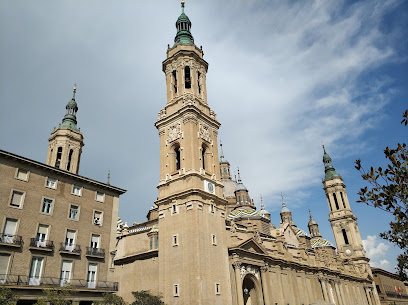
Plaza del Pilar
Explore Zaragoza's iconic Plaza del Pilar, a vibrant hub of history, culture, and stunning architecture that enchants every visitor.

Puerta del Carmen
Discover the grandeur of Puerta del Carmen, Zaragoza's historical gateway, where the past meets the vibrant present in a captivating architectural marvel.

Murallas Romanas de Zaragoza
Discover the ancient Roman Walls of Zaragoza, a preserved historical landmark that offers a glimpse into the city's rich past and architectural beauty.

Plaza San Felipe
Discover the enchanting Plaza San Felipe in Zaragoza, a historical landmark brimming with culture, stunning architecture, and lively local events.
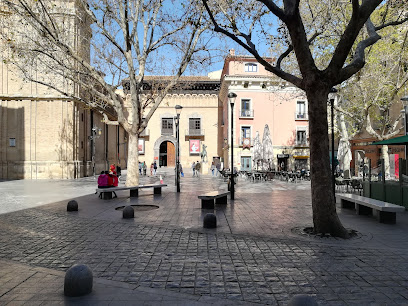
Palacio de Sástago
Explore the exquisite Palacio de Sástago in Zaragoza's Old Town, a historical landmark showcasing stunning architecture and rich cultural heritage.

Monumento a los Mártires de la Religión y de la Patria
Explore the Monument to the Martyrs of Religion and the Fatherland, a historical landmark in Zaragoza that embodies the spirit of sacrifice and patriotism.

Monumento al Justiciazgo
Discover the Monumento al Justiciazgo in Zaragoza, a striking tribute to justice and the city's rich cultural heritage amidst charming streets and historical sites.

Zaragoza
Explore Zaragoza, a historical landmark with stunning architecture, rich culture, and a vibrant atmosphere that captivates every traveler.

Plaza de César Augusto
Discover the rich history and vibrant atmosphere of Plaza de César Augusto, a must-visit tourist attraction in the heart of Zaragoza, Spain.

Unmissable attractions to see
Stone Bridge Zaragoza
Discover the historic beauty of the Stone Bridge in Zaragoza, offering stunning views and a glimpse into the city's rich architectural heritage.

Plaza de los Sitios
Discover the historical beauty of Plaza de los Sitios in Zaragoza, a captivating landmark filled with stunning monuments and rich cultural heritage.

Zaragoza Museum
Explore the Zaragoza Museum, a cultural haven showcasing centuries of art and history in the heart of Zaragoza, Spain.

Essential places to dine
Restaurante El Fuelle
Experience authentic Spanish flavors at Restaurante El Fuelle in Zaragoza's Old Town - a culinary haven for food lovers.

Meli Del Tubo
Discover the essence of Spanish cuisine at Meli Del Tubo in Zaragoza's historic Old Town – a tapas experience like no other!

La Flor de Lis
Discover La Flor de Lis: A culinary oasis in Zaragoza’s Old Town offering delicious fusion dishes in a warm atmosphere.

Restaurante Palomeque
Experience authentic Mediterranean flavors at Restaurante Palomeque in Zaragoza – where tradition meets taste.

Restaurante Casa Lac
Experience the finest Spanish cuisine at Restaurante Casa Lac in Zaragoza's historic Old Town—where tradition meets modern culinary art.

Restaurante Casa Pedro - Gastrobar
Discover exquisite Mediterranean flavors at Restaurante Casa Pedro - Gastrobar in Zaragoza's charming Old Town.
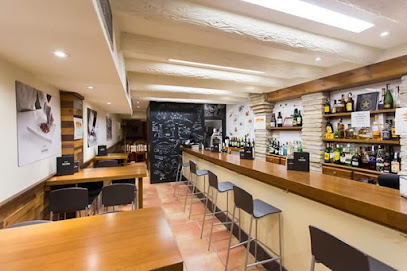
El Viejo Negroni
Experience authentic Spanish flavors at El Viejo Negroni, a vibrant grill and tapas restaurant in Zaragoza's historic Old Town.

Restaurante Casa Juanico
Discover authentic Spanish cuisine at Restaurante Casa Juanico in Zaragoza's Old Town - where tradition meets flavor.
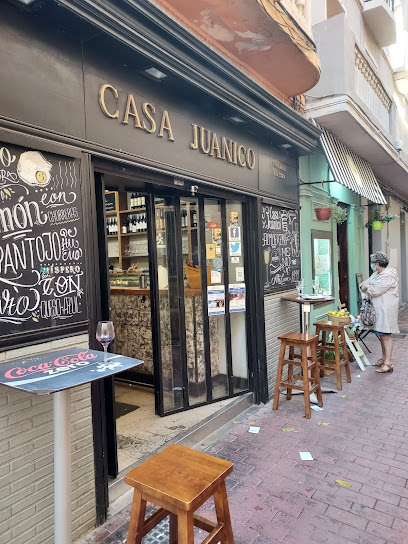
Donde Siempre
Experience authentic Spanish tapas in Zaragoza's historic Old Town at Donde Siempre - where every bite tells a story.

Absinthium Restaurante
Discover the rich flavors of Spain at Absinthium Restaurante in Zaragoza's historic Old Town - a must-visit for food enthusiasts!

Markets, malls and hidden boutiques
ALE-HOP
Explore ALE-HOP in Zaragoza's Old Town for unique gifts and trendy fashion accessories amidst a vibrant shopping atmosphere.

The Shuave Shop
Explore the unique charm of The Shuave Shop in Zaragoza's Old Town, where quirky treasures and local artistry await every visitor's discovery.

Natura
Explore Natura in Zaragoza: A gift shop and clothing store offering unique souvenirs and local craftsmanship in a charming setting.

Zaragoza Olé Souvenirs
Explore Zaragoza Olé Souvenirs for unique gifts and local crafts that embody the spirit of Zaragoza's rich culture and history.
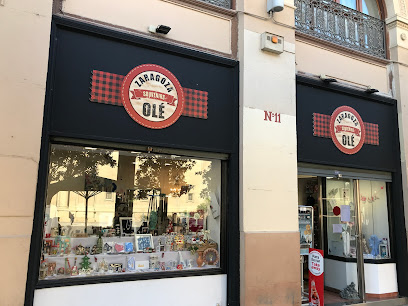
La Mañica
Explore La Mañica in Zaragoza's Old Town for unique souvenirs, local crafts, and a taste of authentic Spanish culture.
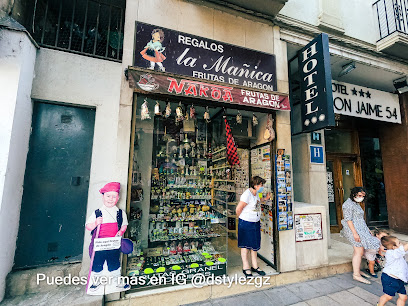
Träd Market Zgz
Discover unique local crafts and souvenirs at Träd Market Zgz in Zaragoza’s charming Old Town, your perfect stop for memorable gifts.

El Torico
Explore El Torico in Zaragoza's Old Town for unique gift baskets and local delicacies that capture the essence of the region.

Boutique Paula Alcázar
Explore unique fashion finds at Boutique Paula Alcázar in Zaragoza's historic Old Town, where chic meets local style.

Turcana
Discover unique gifts and local artisan crafts at Turcana, a charming gift shop in Zaragoza's historic Old Town.

Basilicus Souvenirs
Explore the heart of Zaragoza at Basilicus Souvenirs, where local craftsmanship meets delightful gifting in the city's charming Old Town.
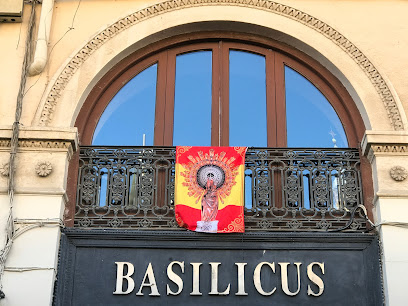
Essential bars & hidden hideouts
Bar Estudios
Discover the vibrant flavors of Zaragoza at Bar Estudios, a must-visit tapas bar in the heart of the city's historic district.

Bar El Circo
Experience the vibrant nightlife and authentic tapas at Bar El Circo in Zaragoza's historic Casco Antiguo.

Rock & Blues Cafe
Experience Zaragoza's vibrant nightlife at Rock & Blues Cafe, where live music, delicious food, and a lively atmosphere await.

Bodegas Almau
Discover the heart of Zaragoza at Bodegas Almau, where traditional tapas and a vibrant atmosphere come together for an unforgettable experience.

El Picadillo
Discover the authentic taste of Zaragoza at El Picadillo, a lively tapas bar serving delicious small plates in the heart of the city's Old Town.

Café Nolasco
Discover the flavors of Zaragoza at Café Nolasco, where delightful grill dishes meet traditional café charm in the heart of the Old Town.
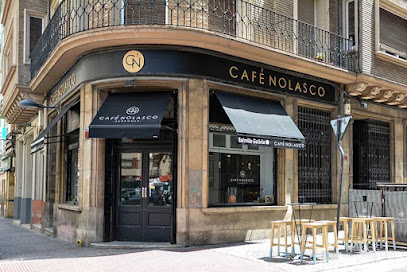
Umalas Bar
Experience the vibrant nightlife of Zaragoza at Umalas Bar, where creative cocktails and a welcoming atmosphere await every visitor.

Bloody
Discover Zaragoza's vibrant cocktail culture at Bloody, a must-visit bar offering innovative drinks and a lively atmosphere in the heart of the Old Town.

Moonlight Experimental Bar
Experience Zaragoza's vibrant nightlife at Moonlight Experimental Bar, where innovative cocktails meet a stylish, artistic ambiance.

Sonora bar
Explore the lively atmosphere of Sonora Bar in Zaragoza's Casco Antiguo, where delicious food meets vibrant musical entertainment.

Local Phrases
-
- HelloHola
[oh-lah] - GoodbyeAdiós
[ah-thyohs] - YesSí
[see] - NoNo
[noh] - Please/You're welcomePor favor/De nada
[por fah-vohr/deh nah-thah] - Thank youGracias
[grah-thee-ahs] - Excuse me/SorryPerdón/Lo siento
[pehr-dohn/loh syehn-toh] - How are you?¿Cómo estás?
[koh-moh ehs-tahs] - Fine. And you?Bien. ¿Y tú?
[byehn. ee too] - Do you speak English?¿Hablas inglés?
[ah-blahs een-glehs] - I don't understandNo entiendo
[noh ehn-tyehn-doh]
- HelloHola
-
- I'd like to see the menu, pleaseMe gustaría ver la carta, por favor
[meh goos-tah-ree-ah behr lah kahr-tah, por fah-vohr] - I don't eat meatNo como carne
[noh koh-moh kahr-neh] - Cheers!¡Salud!
[sah-lood] - I would like to pay, pleaseMe gustaría pagar, por favor
[meh goos-tah-ree-ah pah-gahr, por fah-vohr]
- I'd like to see the menu, pleaseMe gustaría ver la carta, por favor
-
- Help!¡Ayuda!
[ah-yoo-dah] - Go away!¡Vete!
[veh-teh] - Call the Police!¡Llama a la Policía!
[yah-mah ah lah poh-lee-thyah] - Call a doctor!¡Llama a un médico!
[yah-mah ah oon meh-dee-koh] - I'm lostEstoy perdido/a
[ehs-toy pehr-dee-doh/dah] - I'm illEstoy enfermo/a
[ehs-toy ehn-fehr-moh/ah]
- Help!¡Ayuda!
-
- I'd like to buy...Me gustaría comprar...
[meh goos-tah-ree-ah kohm-prahr] - I'm just lookingSolo estoy mirando
[soh-loh ehs-toy mee-rahn-doh] - How much is it?¿Cuánto cuesta?
[kwan-toh kwehs-tah] - That's too expensiveEsto es demasiado caro
[ehs-toh ehs deh-mah-syah-doh kah-roh] - Can you lower the price?¿Puedes rebajar el precio?
[pweh-dehs reh-bah-hahr ehl pree-thyoh]
- I'd like to buy...Me gustaría comprar...
-
- What time is it?¿Qué hora es?
[keh oh-rah ehs] - It's one o'clockEs la una en punto
[ehs lah oo-nah ehn poon-toh] - Half past (10)Y media (las diez)
[ee meh-thee-ah (lahs dyehs)] - MorningMañana
[mah-nyah-nah] - AfternoonTarde
[tahr-deh] - EveningNoche
[noh-tcheh] - YesterdayAyer
[ah-yehr] - TodayHoy
[oy] - TomorrowMañana
[mah-nyah-nah] - 1Uno
[oo-noh] - 2Dos
[dohs] - 3Tres
[trehs] - 4Cuatro
[kooah-troh] - 5Cinco
[theen-koh] - 6Seis
[seh-ees] - 7Siete
[syeh-teh] - 8Ocho
[oh-choh] - 9Nueve
[nweh-veh] - 10Diez
[dyehs]
- What time is it?¿Qué hora es?
-
- Where's a/the...?¿Dónde está el/la...?
[dohn-deh ehs-tah ehl/lah] - What's the address?¿Cuál es la dirección?
[kwahl ehs lah dee-rehk-thee-ohn] - Can you show me (on the map)?¿Puedes mostrarme (en el mapa)?
[pweh-dehs mohs-trahr-meh (ehn ehl mah-pah)] - When's the next (bus)?¿Cuándo es el próximo (autobús)?
[kwan-doh ehs ehl proh-ksee-moh (ow-toh-boos)] - A ticket (to ....)Un billete (a ...)
[oon bee-yeh-teh (ah ...)]
- Where's a/the...?¿Dónde está el/la...?
History of Casco Histórico
-
Zaragoza, known as Caesaraugusta in ancient times, was established by the Romans in 14 BC. The Casco Histórico area is rich with remnants of this era, including the ruins of the Roman theatre and the impressive city walls. These structures testify to the city's importance as a strategic military and trade center in Hispania.
-
During the 8th century, Zaragoza fell under Muslim rule, which lasted for several centuries. This period greatly influenced the architecture and culture of the Casco Histórico, evident in the stunning Mudejar-style buildings, such as the iconic La Seo Cathedral. The blending of Islamic and Christian elements created a unique cultural tapestry that defines the neighborhood.
-
In 1118, Zaragoza was reclaimed by Christian forces under King Alfonso I. This marked the beginning of a new era for the Casco Histórico, where churches and cathedrals were constructed over former mosques. The Cathedral of La Seo, built on the site of a former mosque, reflects the city’s transition and the Christianization of the region.
-
The Casco Histórico witnessed significant upheaval during the Spanish Civil War (1936-1939). The area served as a battleground, and many historical buildings were damaged or destroyed. The aftermath of the war required extensive restoration efforts, leading to a renewed appreciation for the neighborhood's historical significance.
-
Today, the Casco Histórico stands as a vibrant cultural hub, blending historical heritage with contemporary life. The neighborhood is home to numerous museums, galleries, and cultural events, showcasing Zaragoza's rich history and artistic spirit. The annual Fiestas del Pilar, celebrating the city's patroness, draws locals and tourists alike, further cementing the area's role in Zaragoza's cultural identity.
Casco Histórico Essentials
-
Casco Histórico is centrally located in Zaragoza and easily accessible from other neighbourhoods. The main railway station, Zaragoza-Delicias, connects to Casco Histórico via local buses (lines 34 and 51), which take approximately 20 minutes. If you're coming from Zaragoza Airport, take the Aerobus to the city center, then transfer to local buses or walk to reach the historic district. Taxis are also readily available and can be a convenient option for direct transport.
-
Casco Histórico is a pedestrian-friendly area, making it ideal for exploring on foot. The local tram network, known as 'Tranvía,' can be used to access nearby areas, with stops at Plaza de España and the Basilica del Pilar. Bicycles can be rented from various bike-sharing services throughout the city, and there are dedicated bike lanes for safe travel. Public buses are also available for longer distances, with multiple stops throughout the neighbourhood.
-
Casco Histórico is generally safe for tourists, but standard precautions should be taken. Petty crimes, such as pickpocketing, can occur in crowded areas like the Plaza del Pilar and market streets. It is advisable to keep valuable items secure and be vigilant in busy places. Avoid poorly lit or isolated streets at night. While violent crime is rare, it's best to stay aware of your surroundings.
-
In case of an emergency, dial 112 for immediate assistance. This number is valid for police, medical, and fire emergencies. Local hospitals and clinics are available, with the closest hospital being Hospital Clínico Universitario. Pharmacies are scattered throughout Casco Histórico, and many offer 24-hour service. It's advisable to have travel insurance that covers medical emergencies.
-
Fashion: Do wear comfortable shoes for walking, and dress appropriately for visiting religious sites (modest clothing). Don't wear overly casual or revealing attire. Religion: Do respect local customs, such as covering your head in churches. Don't take photos inside places of worship without permission. Public Transport: Do be courteous to fellow passengers and give up your seat to those in need. Don’t eat or drink on public transport. Greetings: Do greet locals with a friendly 'Hola' or a handshake. Don’t be overly formal; a warm approach is appreciated. Eating & Drinking: Do try local specialties like tapas and Aragón wines. Don’t rush through meals, as dining is a social affair in Spain.
-
To experience Casco Histórico like a local, visit the Mercado Central for fresh produce and traditional foods. Engage with local cafes and try a 'tapa' while enjoying a coffee or a glass of local wine. Take time to explore the smaller streets and plazas, where you can find hidden gems and local shops. Don't miss the chance to attend local festivals or events, as they offer a glimpse into the culture and community spirit of Zaragoza.
Trending Landmarks in Casco Histórico
Nearby Cities to Casco Histórico
-
Things To Do in Huesca
-
Things To Do in Lleida
-
Things To Do in Pamplona
-
Things To Do in Teruel
-
Things To Do in Lourdes
-
Things To Do in Tarragona
-
Things To Do in San Sebastián
-
Things To Do in Andorra la Vella
-
Things To Do in Arinsal
-
Things To Do in La Massana
-
Things To Do in Escaldes-Engordany
-
Things To Do in Ordino
-
Things To Do in Encamp
-
Things To Do in El Serrat
-
Things To Do in Canillo













